1. The Constitution (130th Amendment) Bill, 2025 – Polity
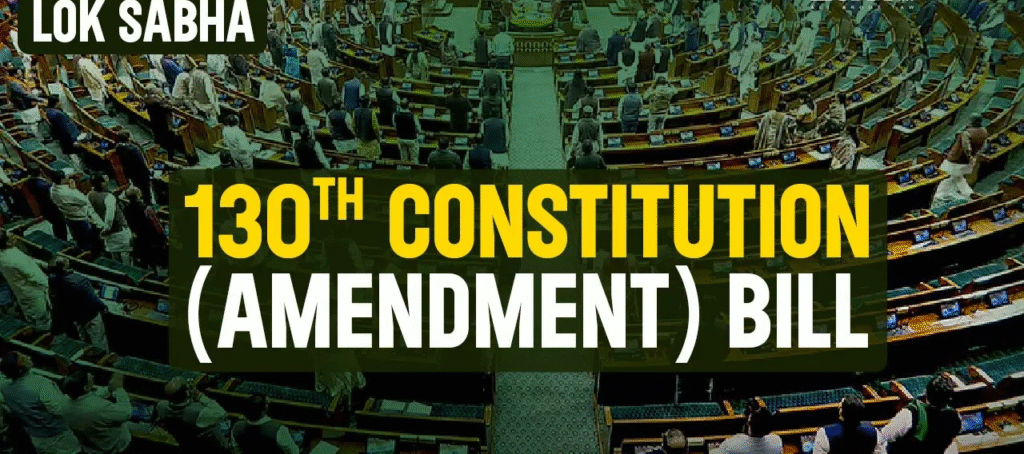
Why in News?
The Union Home Minister is set to introduce three major bills in the Lok Sabha to establish a legal and constitutional framework for the automatic resignation of public office bearers (Prime Minister, Chief Ministers, and Ministers) when arrested and detained on serious criminal charges.
Key Highlights: The Constitution (130th Amendment) Bill, 2025
Bills Introduced:
- The Constitution (130th Amendment) Bill, 2025
- Jammu and Kashmir Reorganisation (Amendment) Bill, 2025
- Government of Union Territories (Amendment) Bill, 2025
Objective of the Amendment:
To uphold public trust and ensure effective governance by mandating the resignation of Ministers who are in judicial custody for serious criminal charges for 30 consecutive days.
Provisions of the 130th Constitutional Amendment Bill
| Aspect | Provision |
|---|---|
| Scope | Applies to Prime Minister, Chief Ministers, and Ministers at Union, State, and UT levels |
| Grounds for Removal | If detained/arrested for 30 consecutive days on charges punishable by 5 years or more |
| Reappointment | Permitted after release from custody |
| Constitutional Articles Amended |
- Article 75: Adds automatic resignation clause for Union Ministers
- Article 164: Adds same for State Ministers and Chief Ministers
- Article 239AA: Adds Section 5A – automatic removal for Delhi CM and Ministers |
Significance & Implications
- Promotes Ethical Governance: Aligns with the idea of clean politics by discouraging individuals with serious criminal charges from holding office.
- Addresses Governance Gap: Prevents arrested leaders from running the administration from jail (e.g., the Arvind Kejriwal case in Delhi).
- Public Confidence: Reinforces the integrity of public institutions and trust in democratic processes.
- Legal Clarity: Provides uniform and codified guidelines for removal and reappointment post-custody.
Exam Connect – Possible Questions
Prelims
1. Which of the following Articles is proposed to be amended by the Constitution (130th Amendment) Bill, 2025?
A. Article 80, Article 123, Article 370
B. Article 75, Article 164, Article 239AA
C. Article 21, Article 324, Article 356
D. Article 368, Article 1, Article 50
Answer: B. Article 75, Article 164, Article 239AA
2. As per the proposed Constitution (130th Amendment) Bill, 2025, Ministers are required to resign if:
A. They are accused of financial corruption.
B. They are in custody for 15 days or more.
C. They are arrested and detained for 30 consecutive days on charges punishable by 5 years or more.
D. A vote of no-confidence is passed against them.
Answer: C. They are arrested and detained for 30 consecutive days on charges punishable by 5 years or more.
Mains
1. Discuss the implications of the Constitution (130th Amendment) Bill, 2025 on ethical governance and political accountability in India.
2. Do you think automatic removal of Ministers upon prolonged judicial custody strikes the right balance between constitutional morality and due process? Critically examine.
2. Control of Election Officials: Election Commission vs States – Polity
Why in News?
The Election Commission of India (ECI) is in a standoff with the West Bengal government over disciplinary control of election officials. The state government has refused to act against four officials accused of electoral roll tampering, arguing that the Model Code of Conduct (MCC) is not in effect as no elections are currently scheduled.
This situation has revived a long-standing debate on the extent of the ECI’s control over state government officers deployed on election duty.
Key Highlights
Constitutional & Legal Backing of ECI’s Authority
- The Election Commission of India (ECI) is a constitutional body under Article 324 of the Constitution, responsible for free and fair elections.
- During elections, officials from the state administrative machinery are put under the ECI’s direct supervision.
1988 Amendments
- Amendments to the Representation of the People Act, 1950 and 1951 granted the ECI explicit control over election officials during the conduct of elections.
Constituent Assembly Vision
- The Constituent Assembly wanted the Chief Election Commissioner to be as independent as a Supreme Court judge, ensuring non-interference from the executive.
Historical Precedent: T. N. Seshan Era
- In 1993 Ranipet by-election, CEC T. N. Seshan’s demand for central forces resulted in the postponement of several elections, highlighting executive-ECI friction.
- A settlement in 2000, aided by Supreme Court intervention, helped clarify disciplinary powers and ensured cooperation mechanisms between the ECI and states.
Current Conflict with West Bengal
- Issue: ECI sought action against 4 officials accused of tampering electoral rolls.
- West Bengal’s stance: Refusal, citing no current elections and non-applicability of MCC.
- ECI’s Response Options:
- Summon Chief Secretary or Election Officer
- Seek Central Government support
- Approach the judiciary to compel action
Broader Implications
- Tensions between ECI & States raise questions about:
- Federalism vs Centralization
- Autonomy of constitutional bodies
- Enforceability of Model Code of Conduct outside election periods
- Highlights the practical limitations of ECI’s authority despite its constitutional status.
Exam Connect – Possible Questions
Prelims
1. The Election Commission of India derives its authority to supervise elections from which Article of the Constitution?
A. Article 324
B. Article 326
C. Article 312
D. Article 123
Answer: A. Article 324
2. The 1988 amendments to the Representation of the People Act are significant because:
A. They allowed the President to remove the Chief Election Commissioner.
B. They gave the ECI constitutional status.
C. They formally placed election officials under ECI’s supervision during elections.
D. They introduced electronic voting machines.
Answer: C. They formally placed election officials under ECI’s supervision during elections.
Mains
1. “The independence of the Election Commission is crucial for a vibrant democracy, but its authority over election officials is often contested by state governments.” Discuss in the context of recent developments.
2. Critically examine the challenges faced by the Election Commission of India in exercising its disciplinary powers over state government officials during and outside the election period.
3. Office of the Chief Election Commissioner (CEC) – Polity
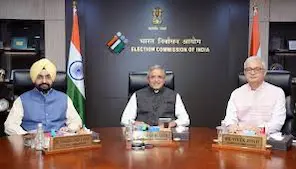
Why in News?
The INDI Alliance bloc is reportedly contemplating a motion in Parliament to remove the Chief Election Commissioner (CEC), raising serious concerns over election management, neutrality, and institutional integrity. This has revived debate on the independence and accountability of the Election Commission of India (ECI).
Key Highlights: Election Commission of India (ECI)
| Feature | Description |
|---|---|
| Established On | 25 January 1950 (Celebrated as National Voters’ Day) |
| Constitutional Provisions | Articles 324 to 329 (Part XV of the Constitution) |
| Primary Role | Conducting free and fair elections to Lok Sabha, Rajya Sabha, State Legislative Assemblies, and offices of President and Vice-President |
Structure of the Election Commission
- Before 1993: Single-member body (only the CEC)
- Since 1993:Three-member body:
- 1 Chief Election Commissioner (CEC)
- 2 Election Commissioners (ECs)
The ECI functions collegially, but the CEC acts as the first among equals.
Appointment and Tenure
| Aspect | Details |
|---|---|
| Appointing Authority | President of India, on the recommendation of a Selection Committee led by the Prime Minister |
| Tenure | 6 years or until the age of 65 years, whichever is earlier |
| Status & Perks | Equivalent to Supreme Court judges (for CEC) |
| Removal Process (for CEC) | On grounds of proved misbehavior or incapacity Requires a two-thirds majority in both Houses of Parliament Same process as removal of a Supreme Court judge | Removal Process (for ECs) | Cannot be removed without the recommendation of the CEC | |
Recent Concerns Raised
- Allegations of Bias: Opposition parties allege partisanship in the functioning of the ECI, especially during recent elections.
- Motion to Remove CEC: While such motions are extremely rare, they highlight rising political scrutiny of the ECI’s role and neutrality.
- Democratic Implications: Any attempt to remove the CEC has far-reaching consequences for institutional credibility, especially with elections being the bedrock of Indian democracy.
Significance & Challenges
- Institutional Independence: Ensuring that the ECI remains free from executive interference is vital for electoral democracy.
- Selection Process Debate: Experts and civil society have long demanded a bipartisan or judicially-involved selection committee to enhance transparency.
- Functioning under Pressure: Political pressures and polarized public opinion often undermine the ECI’s perceived neutrality.
Exam Connect – Possible Questions
Prelims
1. The Chief Election Commissioner of India can be removed from office:
A. By the President on the advice of the Prime Minister
B. Through a Supreme Court judgment
C. In the same manner as a High Court judge
D. In the same manner as a Supreme Court judge
Answer: D. In the same manner as a Supreme Court judge
2. Which of the following statements is/are correct about the Election Commission of India (ECI)?
1. The ECI was established in 1951 under the Representation of the People Act.
2. The CEC enjoys the same status and salary as a Supreme Court judge.
3. The Election Commission became a three-member body in 1993.
Select the correct answer using the code below:
A. 1 and 2 only
B. 2 and 3 only
C. 1 and 3 only
D. 1, 2 and 3
Answer: B. 2 and 3 only
(Statement 1 is incorrect: ECI was established in 1950 as a constitutional body, not under RPA 1951.)
Mains
1. Examine the constitutional safeguards available to the Chief Election Commissioner of India. Do you think the present selection process ensures institutional independence?
2. In light of recent events, critically analyze the role of the Election Commission of India in maintaining the democratic fabric of the nation.
4. Snow Leopard Sighting in Kishtwar Himalayas (Jammu & Kashmir) – Environment

Why in News?
A three-year camera trapping study has confirmed the year-round presence and breeding activity of snow leopards in the Kishtwar Himalayas of Jammu & Kashmir. This finding strengthens efforts to monitor and conserve this elusive and ecologically significant species in the Indian Himalayas.
Key Highlights: Snow Leopard
About the Species
| Feature | Details |
|---|---|
| Scientific Name | Panthera uncia |
| Common Name | Snow Leopard / Ghost of the Mountains |
| IUCN Status | Vulnerable |
| CITES Listing | Appendix I (most endangered category) |
| Indian Law | Schedule I of the Wildlife (Protection) Act, 1972 (maximum protection) |
Habitat and Distribution
- Preferred Terrain:
- Steep, rugged mountainous landscapes, rocky cliffs, and ravines
- Elevations typically between 3,000 to 5,000 meters
- Global Range:
- Found in 12 countries including:
- India, China, Bhutan, Nepal, Pakistan, Russia, Mongolia, and others
- Found in 12 countries including:
- Snow Leopard Range in India:
- Jammu & Kashmir
- Himachal Pradesh
- Uttarakhand
- Sikkim
- Arunachal Pradesh
Adaptations and Physical Features
- Fur & Camouflage: Pale grey fur with dark rosettes blends with rocky terrain
- Tail: Long, thick tail (nearly half of body length) used for balance and insulation
- Behavior:
- Solitary and elusive, mostly active at dawn and dusk
- Breeding observed in harsh winter months
Conservation Significance
- Snow leopards are top predators in the fragile Himalayan ecosystem and serve as an indicator species for mountain habitat health.
- Their presence implies a stable prey base and ecosystem integrity.
- Conservation is vital to protecting alpine biodiversity, local communities’ livelihoods (through eco-tourism), and climate-sensitive habitats.
Conservation Measures in India
- Project Snow Leopard (2009):
- A centrally sponsored scheme by the Ministry of Environment, Forest and Climate Change (MoEFCC)
- Focuses on landscape-level conservation involving local communities
- SECURE Himalaya Project:
- Partnership between MoEFCC and UNDP
- Funded by Global Environment Facility (GEF)
- Targets sustainable management of high-altitude ecosystems
- National Protocol for Snow Leopard Population Assessment:
- Scientific monitoring via camera traps and genetic analysis
Exam Connect – Possible Questions
Prelims
1. Which of the following statements about the Snow Leopard is/are correct?
1. It is listed as Endangered in the IUCN Red List.
2. It is found in India only in Jammu & Kashmir and Himachal Pradesh.
3. It is protected under Schedule I of the Wildlife Protection Act, 1972.
Select the correct answer using the codes below:
A. 1 and 2 only
B. 2 and 3 only
C. 3 only
D. 1, 2 and 3
Answer: C. 3 only
(Explanation: Statement 1 is incorrect—it is Vulnerable, not Endangered; Statement 2 is incorrect—it is also found in Uttarakhand, Sikkim, and Arunachal Pradesh)
2. Consider the following pairs:
| Conservation Programme | Associated Species |
|---|---|
| Project Snow Leopard | Snow Leopard |
| Project Elephant | Himalayan Ibex |
| Project Tiger | Bengal Tiger |
Which of the pairs are correctly matched?
A. 1 and 2 only
B. 2 and 3 only
C. 1 and 3 only
D. All of the above
Answer: C. 1 and 3 only
Mains
1. Discuss the ecological significance of the snow leopard in the Himalayan ecosystem. What challenges does its conservation face in the Indian context?
2. Examine the role of community participation in conserving high-altitude species like the snow leopard. Refer to Indian initiatives such as Project Snow Leopard and SECURE Himalaya.
5. Thattekad Bird Sanctuary Adds New Species to Biodiversity List – Environment
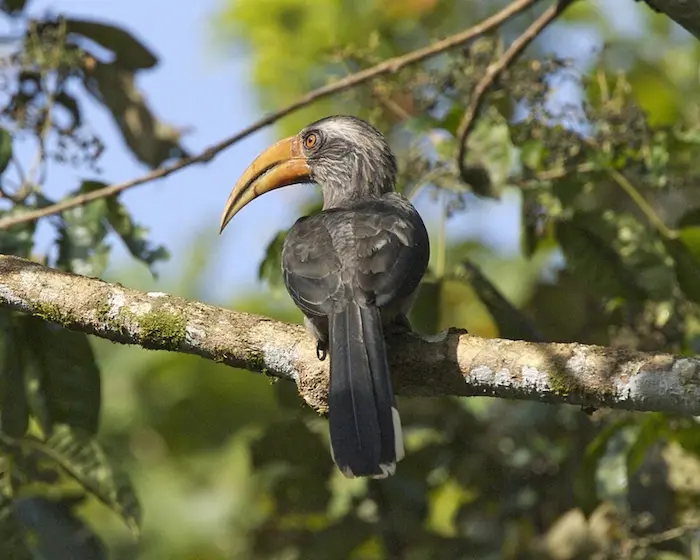
Why in News?
A recent comprehensive faunal survey at the Thattekad Bird Sanctuary, located in Ernakulam, Kerala, has added nine new bird species to its official biodiversity checklist. This reinforces the sanctuary’s role as a key avian biodiversity hotspot in the Western Ghats.
Key Highlights: Thattekad Bird Sanctuary
| Feature | Description |
|---|---|
| Location | Ernakulam district, Kerala |
| Geography | On the banks of the Periyar River, at the foothills of the Western Ghats |
| Official Status | Declared Kerala’s first bird sanctuary in 1983 |
| Alternate Name | Dr. Salim Ali Bird Sanctuary (named after India’s legendary ornithologist) |
Ecological Zones and Habitat Types
- Vegetation Types:
- Tropical Evergreen Forests
- Tropical Semi-Evergreen Forests
- Moist Deciduous Forests
- Natural Features:
- Periyar River
- Marshes and lagoons formed by the Bhootathankettu Dam
- Prominent peaks: Thoppimudi, Nyayapillimudi
Flora of Thattekad
Includes endemic and rare tree species such as:
- Myristica dactyloides (wild nutmeg)
- Hopea parviflora (Ironwood tree)
- Tetrameles nudiflora
- Teak
- Rosewood
- Mahogany
Fauna – Avifaunal Richness
Thattekad is renowned for its bird diversity, hosting both resident and migratory birds, including:
- Ceylon Frogmouth
- Black Baza
- Oriental Dwarf Kingfisher
- Bay Owl
These species are indicators of healthy tropical forest ecosystems and attract ornithologists from across the world.
Significance of the Recent Survey
- Adds 9 new bird species to the sanctuary’s official record.
- Highlights the conservation value and ongoing ecological research.
- Reinforces the sanctuary’s importance as a core birding area within the Western Ghats Biodiversity Hotspot.
Exam Connect – Possible Questions
Prelims
1. Consider the following statements regarding Thattekad Bird Sanctuary:
1. It is situated on the banks of the Godavari River.
2. It was the first bird sanctuary established in Kerala.
3. It is part of the Western Ghats Biodiversity Hotspot.
Which of the above statements is/are correct?
A. 1 and 2 only
B. 2 and 3 only
C. 1 and 3 only
D. 1, 2 and 3
Answer: B. 2 and 3 only
(Explanation: Statement 1 is incorrect – it is on the Periyar River, not Godavari.)
2. Which of the following bird species are known to inhabit Thattekad Bird Sanctuary?
1. Ceylon Frogmouth
2. Bay Owl
3. Great Indian Bustard
4. Black Baza
Select the correct answer using the codes below:
A. 1, 2 and 3
B. 1, 3 and 4
C. 1, 2 and 4
D. All of the above
Answer: C. 1, 2 and 4
(Explanation: The Great Indian Bustard is found in arid grasslands, mainly in Rajasthan and Gujarat, not Thattekad.)
Mains
1. Highlight the ecological and conservation importance of bird sanctuaries in India. Discuss the recent findings from the Thattekad Bird Sanctuary in this context.
2. Bird sanctuaries are not only centers of biodiversity but also drivers of eco-tourism and local livelihoods. Examine with reference to Thattekad and other Indian bird sanctuaries.
6. “Anna-Chakra” – A Digital Tool to Optimize PDS Supply Chain – Economy
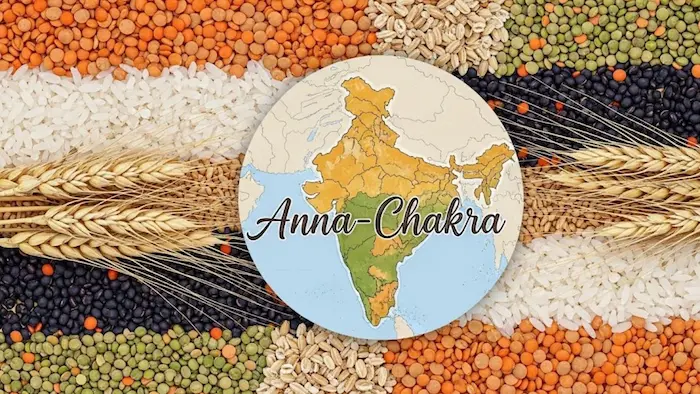
Why in News?
The Union Minister of State for Consumer Affairs, Food and Public Distribution recently provided updates in Parliament about the “Anna-Chakra” tool—an AI-based solution aimed at optimizing the Public Distribution System (PDS) supply chain across India.
Key Highlights: What is Anna-Chakra?
| Feature | Description |
|---|---|
| Name | Anna-Chakra (translates to “Food Wheel”) |
| Developed By | World Food Programme (WFP) + Foundation for Innovation and Technology Transfer (IIT Delhi) |
| Purpose | To digitally optimize supply routes for food grain delivery through the Public Distribution System (PDS) |
| Coverage (as of 2025) | Implemented in 30 States and Union Territories, including Manipur |
| Infrastructure Supported | 4.37 lakh Fair Price Shops (FPS) 6,700 warehouses | | Benefits | Reduces fuel costs and CO₂ emissions Cuts travel distance by 15–50% Estimated savings: ₹250 crore/year | |
Public Distribution System (PDS) – A Quick Overview
| Aspect | Details |
|---|---|
| Objective | To provide subsidized essential food grains to low-income and vulnerable households |
| Historical Background | Originated during inter-war years Expanded after 1960s food crises Revamped in 1992 to expand coverage in rural and poverty-stricken areas | | Coverage | Serves around 800 million people via 5+ lakh Fair Price Shops | | Managed By | Centre (FCI) – procurement, storage, transportation States – distribution via FPS | | Items Distributed | Rice, wheat, sugar, kerosene; some states also distribute pulses and edible oils | | Legal Backing | National Food Security Act (NFSA), 2013 – provides legal entitlement to food grains | |
Significance of Anna-Chakra for India’s Food Security
- Efficiency Gains: Reduces logistical delays and leakages in food grain delivery
- Environmental Impact: Fewer transportation miles → lower carbon footprint
- Fiscal Savings: Reduces operational costs in a scheme that already has a high subsidy burden
- Scalability: Can be scaled to other welfare delivery systems like Mid-Day Meals or Integrated Child Development Services (ICDS)
Challenges in PDS & How Anna-Chakra Helps
| Challenge | Role of Anna-Chakra |
|---|---|
| Leakages & Diversions | Route optimization → Real-time monitoring |
| High Transport Costs | Reduces distance, fuel usage |
| Delayed Deliveries | AI-assisted route planning |
| Environmental Concerns | Reduces CO₂ emissions |
| Regional Disparities | Efficient resource allocation |
Exam Connect – Possible Questions
Prelims
1. Which of the following correctly describes the “Anna-Chakra” tool?
A. A mobile app for real-time grain tracking by consumers
B. A software developed to reduce food subsidy leakages at FPS
C. An AI-based route optimization tool for PDS supply chain
D. A digital payment gateway for ration card holders
Answer: C. An AI-based route optimization tool for PDS supply chain
2. Consider the following statements about the Public Distribution System (PDS):
1. The Centre is responsible for retail-level distribution of food grains.
2. The National Food Security Act provides a legal right to subsidized food grains.
3. The Food Corporation of India handles procurement and storage of food grains under PDS.
Which of the above statements are correct?
A. 1 and 2 only
B. 2 and 3 only
C. 1 and 3 only
D. 1, 2 and 3
Answer: B. 2 and 3 only
(Explanation: Statement 1 is incorrect – States, not Centre, handle retail-level distribution.)
Mains
1. Discuss the role of digital technologies like Anna-Chakra in reforming India’s Public Distribution System. How can such tools improve both efficiency and transparency?
2. Evaluate the Public Distribution System in India with respect to its strengths and limitations. Suggest how technology can address its operational bottlenecks.
7. SEBI Proposes Changes to Minimum Public Shareholding (MPS) Norms – Economy
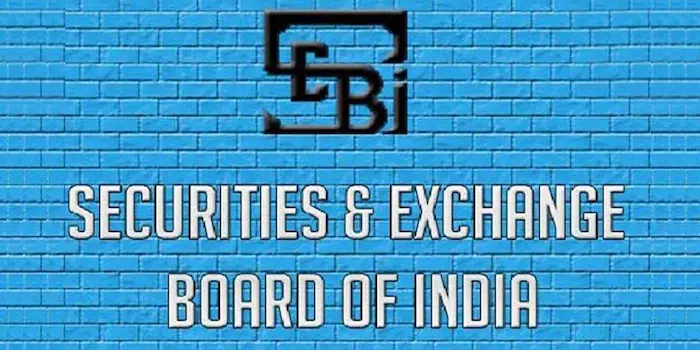
Why in News?
The Securities and Exchange Board of India (SEBI) has released a consultation paper proposing changes to the rules governing Minimum Public Shareholding (MPS) and Minimum Public Offer (MPO). The proposed reforms aim to increase market liquidity, boost investor participation, and enhance price stability in equity markets, especially for large listed companies.
Key Concepts
1. Minimum Public Shareholding (MPS)
| Aspect | Description |
|---|---|
| Definition | The rule that at least 25% of a listed company’s shares must be held by the public (non-promoter entities) |
| Objective |
- Broaden ownership base
- Enhance transparency and accountability
- Improve stock liquidity and price discovery |
| Applicable Law | Clause 40A of Listing Obligations and Disclosure Requirements (LODR), overseen by SEBI |
2. Minimum Public Offer (MPO)
| Aspect | Description |
|---|---|
| Definition | The minimum number of shares a company must offer to the public during an Initial Public Offer (IPO) |
| Purpose | Ensures adequate public participation during listing, like a shop displaying enough stock for buyers |
SEBI’s Proposed Changes (2025)
| Current Rule | Proposed Change |
|---|---|
| Public shareholding of 25% within 3 years of listing | Extended to 10 years for large companies (₹50,000 crore–₹1 lakh crore valuation) |
| No interim milestones | Must meet 15% MPS within 5 years; full 25% by year 10 |
| Uniform MPS norms | Flexible approach based on company size to avoid market disruption |
Significance of the Reform
- Eases listing burden on large corporates, especially PSUs and tech giants with high valuations
- Prevents excessive selling pressure that could distort share prices during early listing years
- Aims to balance market liquidity with realistic capital market expectations
- Encourages companies to list earlier without fear of violating MPS compliance
Contextual Background
- MPS introduced in 2010 to curb promoter dominance in public companies
- SEBI has penalized non-compliant firms in the past
- Recent IPOs of large tech/startup firms have sparked debate over flexibility in early compliance
Exam Connect – Possible Questions
Prelims
1. The Minimum Public Shareholding (MPS) rule in India mandates that:
A. 51% of a listed company’s shares must be held by the public
B. 25% of a listed company’s shares must be held by the public
C. 10% of all public sector companies must be offered for disinvestment
D. 33% of the company’s board must consist of independent directors
Answer: B. 25% of a listed company’s shares must be held by the public
2. Which regulatory body is responsible for enforcing the Minimum Public Shareholding norms in India?
A. RBI
B. NITI Aayog
C. SEBI
D. Ministry of Finance
Answer: C. SEBI
Mains
1. What is the rationale behind the Minimum Public Shareholding (MPS) rule? Examine SEBI’s recent proposal to extend compliance timelines for large companies.
2. Discuss the impact of flexible MPS norms on India’s capital markets. Can such flexibility affect investor confidence or market efficiency?

